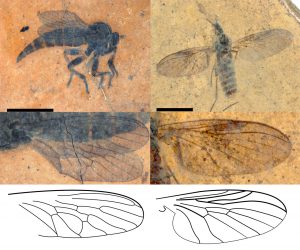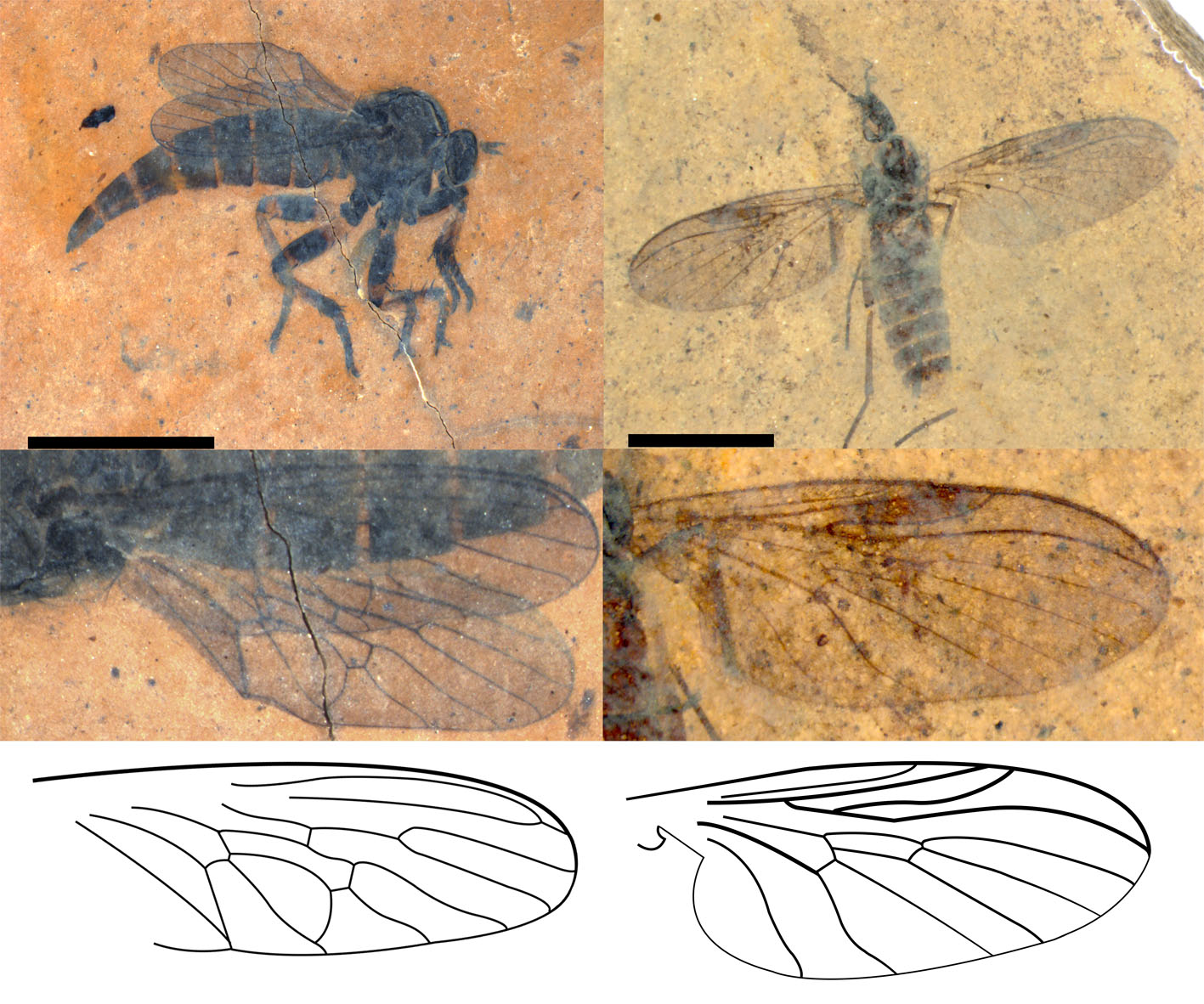Species Named For Smithsonian Libraries and Biodiversity Heritage Library
Two new fossil fly species have been named in honor of the Smithsonian Libraries and the Biodiversity Heritage Library. Sylvicola silibrarius Greenwalt, 2019 and Kishenehnoasilus bhl Dikow, 2019 have been described from specimens collected from the 46-million-year-old Kishenehn Formation of northwestern Montana. The species were published last week in the open access journal Palaeontologia Electronica.

The species are two of 15 new species identified in a new study led by scientists at the Smithsonian’s National Museum of Natural History and colleagues on the diversity of fossil flies (order Diptera) in the Coal Creek Member of the Kishenehn Formation, a 34-56 million year old fossil site. The study also records 15 new families, dramatically expanding scientists’ knowledge of fly diversity during the Eocene in North America. With this publication, a total of 21 different families of flies have now been described from the region. The study provides researchers with a snapshot of flies during their evolution and helps establish the Kishenehn Formation as one of the most important fossil sites in North America for understanding the evolution of one of the most successful groups of life on Earth.
Sylvicola silibrarius Greenwalt, 2019 is a wood gnat in the widely-distributed Anisopodidae family containing nearly 200 species and boasting a rich fossil record. The specific epithet is a combination of the abbreviation SI (for the Smithsonian Institution) and the Latin term librarius (pertaining to books). Dale Greenwalt, lead study author and a resident research associate at the National Museum of Natural History, named the species in appreciation for the essential services that the Smithsonian Libraries perform.
“My research here at the National Museum of Natural History would be impossible without the Libraries,” said Greenwalt. “In my ten years here at the museum, I have never had an interaction with our world class library staff that was not positive, friendly and helpful.”
Kishenehnoasilus bhl Dikow, 2019, a robber fly in the family Asilidae, represents the type species for this new genus. The specific epithet is an abbreviation referring to the Biodiversity Heritage Library (BHL). Torsten Dikow, study co-author and curator of Diptera at the National Museum of Natural History, drew a comparison between the fly and the Library when naming the species.
“Taxonomic research involves not only the study of specimens, but also the review of often old literature,” said Dikow. “Having digital access to publications enhanced with tools such as scientific name recognition makes my research so much more efficient. The Biodiversity Heritage Library provides a lens into the literature published a long time ago. The same is true for this new species of robber fly, as it helps us to understand and document the past of biodiversity.”
The type specimens for both Sylvicola silibrarius and Kishenehnoasilus bhl have been deposited within the paleobiology collections of the Smithsonian’s National Museum of Natural History, where they will be available to researchers to help inform future studies on dipteran evolution and diversification.
“For centuries, libraries have been essential centers of knowledge with collections serving as windows into the universe of human scholarship, history and creativity,” said Martin R. Kalfatovic, associate director of the Smithsonian Libraries and program director for the Biodiversity Heritage Library. “As libraries have evolved to embrace the digital world — from online access for collections to data mining those same collections for new discoveries — they have empowered new research efficiencies and connections and facilitated the democratization of knowledge through open access principles like those embraced by the Smithsonian and Biodiversity Heritage Library. That these researchers have honored our libraries through these species is a testament to the essential services that libraries provide today. We are privileged to be recognized in such a meaningful way for our impact on the global research community.”


Be First to Comment